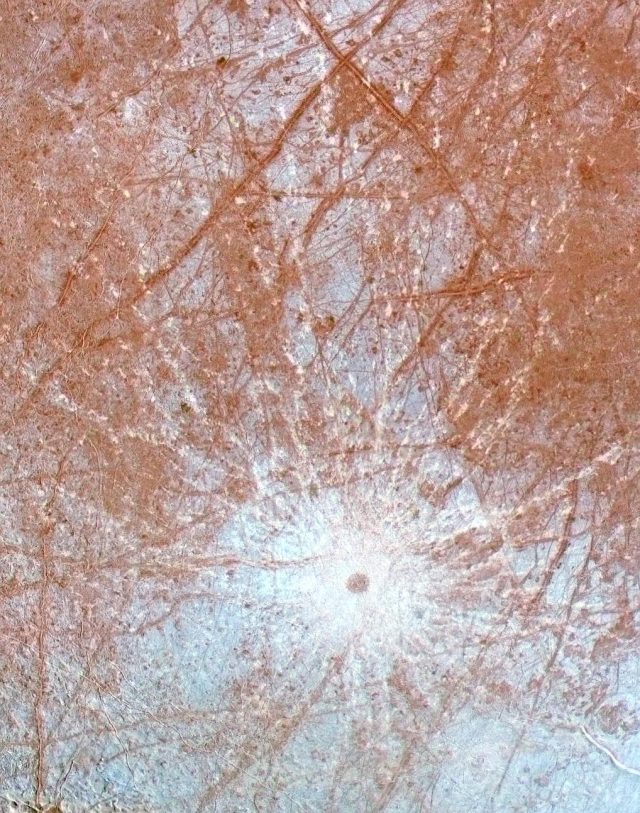
Nearly 15 years have passed since NASA sent its Galileo spacecraft flying into Jupiter's outer atmosphere to die—eliminating the possibility of contaminating nearby Jovian moons with any traces of Earth bacteria. However, a new study seeking evidence of water plumes on the surface of Jupiter's moon Europa demonstrates that, even now, Galileo is providing valuable information.
Since Galileo's end, the Hubble Space Telescope has periodically observed the Jovian system. Sometimes, when the telescope has looked, it has observed water vapor emissions coming from the surface of Europa. This indicates the existence of periodic jets of water emanating from the moon's interior.The prospect of the water gushing from the moon's interior has tantalized scientists, as that warm, vast interior ocean is thought to be one of the best places in the Solar System beyond Earth—if not the best—to look for extant life. Since the ice sheet covering Europa is thought to be at least several kilometers thick, being able to sample the ocean from space or the moon's surface would greatly aid this search.
In-situ observations
The Hubble findings were tentative but intriguing, so a team of US astronomers went back and took a second look at data collected by the Galileo spacecraft during its eight-year stay in the Jovian system. During that time, the spacecraft made 11 flybys of Europa, including one in which it came to within a few hundred kilometers of the moon's surface.
To their delight, the scientists found such a signal on December 16, 1997, during the spacecraft's E12 orbit. This was also Galileo's closest approach to Europa, when it came to within 206km and flew near the Pwyll Crater region. During this pass, the spacecraft's magnetometer measured significant changes, as did Galileo's plasma wave spectrometer. They believed these fluctuations might be due to perturbations from a water plume in the plasma surrounding the moon.
"The sudden, short-duration jump in the frequency of intense emissions can be interpreted as consistent with a highly localized source of plasma, thereby supporting the hypothesis that the magnetic perturbations arise from passage through a localized plume," write the authors of a new paper describing the findings in Nature Astronomy.After finding these changes, the authors sought to model the magnetic and hydrodynamic effects the spacecraft observed. One version of the model included plumes on the surface of Europa, whereas another did not. The model simulations that included plumes from Europa closely matched the Galileo data, but the model without them did not. This led the scientists to conclude that Hubble had indeed seen plumes on Europa, and Galileo must have flown near or through one.
Finding them again
One ardent supporter of a mission to Europa, Texas Congressman John Culberson, broke the embargo on this news last week during a Congressional hearing on NASA's budget. “It’s worth noting that the scientific journal Nature Astronomy just reported that the Galileo mission, back in 1997, flew through a water plume on Europa 1,000 kilometers thick," Culberson said during an appropriations subcommittee markup in the House. "So the ocean of Europa is venting into outer space.”
To support his fiscal year 2019 budget for more than $700 million for the Europa Clipper flyby mission and a follow-on lander mission, Culberson passed out copies of the Nature Astronomy article to the committee members. This can properly be seen as evidence of both his excitement about the prospect of going back to Europa—the Clipper mission could launch as early as 2022—as well as the need to build political support for missions that will cost a few billion dollars apiece. The newest findings certainly won't hurt.
reader comments
130